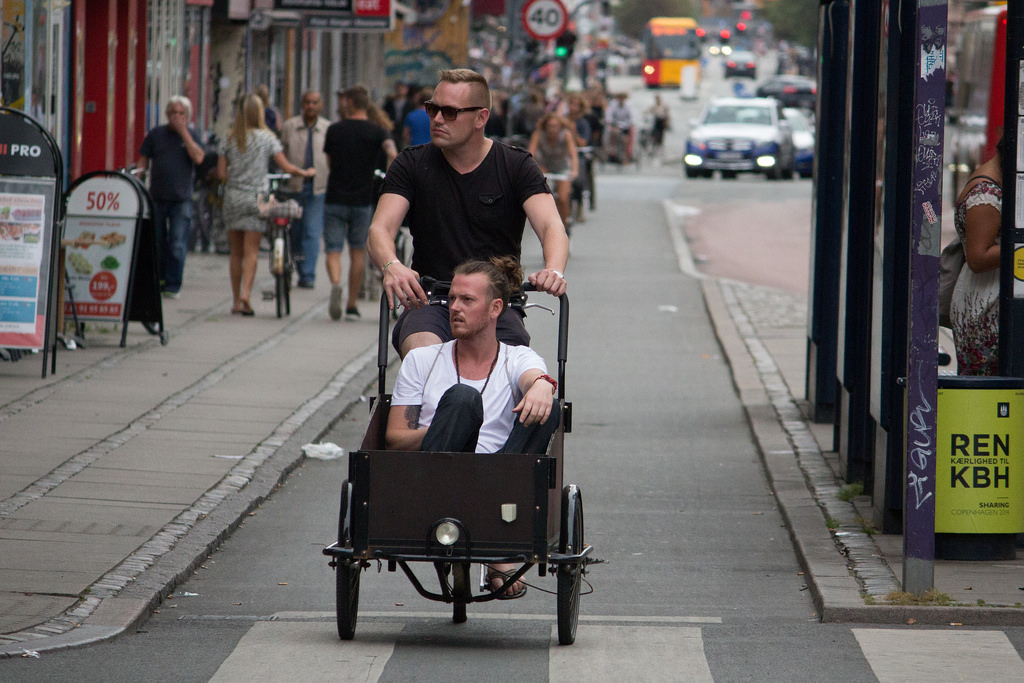Five Danish Life Lessons For The Rest of Us

After three years living and working with the Danes, what insights and life lessons have I learned?
Hygge is a very rich community oriented social concept which can roughly be translated as coziness and is at the heart of Danish culture. Embracing it, Danes take the negatives of winter and with a highly practical realism convert them into a celebration of companionship, warmth, and comfort. In so-doing they take one of Denmark’s worst attributes and redefine it as part of what defines Danish culture.
This deep sense of Danish realism is the missing element that the outside world has had trouble understanding when trying to unlock the Danish secret to happiness. In contrast to the modern American who has adopted an overly entitled and optimistic version of the American dream, Danes embrace an approach of managed expectations and a careful blend of realism and optimism.
This means that Danes anticipate the need to invest in and make the most out of situations. So, what are five lessons I’ve learned from the Danes over the last three years?
Lesson 1 – Realistic expectations lead to real happiness
- This does not mean not having dreams or that you should be a pessimist. It means accepting that happiness and success have a basic cost and require work. For the Danes this can mean extra years pursuing higher education, or a willingness to pay higher taxes in exchange for a more robust system of services and opportunities.
Lesson 2 – It is easier to be happy when healthy
- Small health concerns can lead to big problems. Things like free ambulance rides, doctors appointments, and access to medical attention leave the Danes more productive, healthier, and better prepared to tackle challenges as they arise. Life is challenging enough when you’re fit, healthy, and able to give it your 100%. Why make it significantly more difficult when you don’t need to? This builds on the core worldview from Lesson 1.
Lesson 3 – Shape your surroundings to inspire happiness
- Denmark is famous for its multi-colored building facades. These are more than ornamental, they bring light and color to the depths of the dark winter months. Danes invest heavily in re-shaping their environment. This is likely the source of their excellent reputation for design and part of why they are such an innovative people.
Lesson 4 – Work/life balance is essential and shouldn’t make you miserable
- Perks and a workplace environment that most Americans would only expect from brands like Google are common place in Denmark with most workplaces providing communal lunch, flexible hours, and visually creative office environments. Beyond this, the Danish mentality is results oriented and prioritizes a distinct line between personal and private lives. The national minimum is 25 days of vacation with most companies offering 30. Danes are also expected to take the majority of this vacation time each year, including at least one week in July or August.
Lesson 5 – What you are passionate about defines you, not your job
- Asking a Dane outright what they do is on-par with asking an American what their salary is. Where Americans typically define themselves by their job, where they live, what they drive, and what they studied the Danes prioritize passions, hobbies, and activities. In Denmark, “where do you work?” Becomes, “what do you love to do?” It is common to talk about topics that would otherwise be embarrassing or taboo in other cultures, such as, a passion for science fiction, your YouTube rock band, or your passion for gardening.
Hi.. interesting reading – you are very objective. I have a comment to your point 4.. actually Danes are mandated to have their main vacation which is 3 weeks during june-august perod – hereof 2 must be cohesive
Hi Jeanne, thank you for elaborating on that! Appreciate it!
From a Dane living in the US – you hit it spot on. You may want to emphasize that the 30 days is actually 6 weeks of vacation. Especially Americans who work everyday of the week may not get that 😉
As a Dane having lived in the US for a few years, I sometimes tried to describe the little differences in culture to my American friends. I found that I actually had a hard time with the finer details. This describes the Danish core spot on! Thank you 🙂
The nuances of what sets the two apart are definitely a challenge to express. It’s something I’m very interested in at the moment. So, I hope to follow up on this and the Nordic Conversations post with additional insights! Thanks for weighing in! I really appreciate it and am thrilled that it resonated!